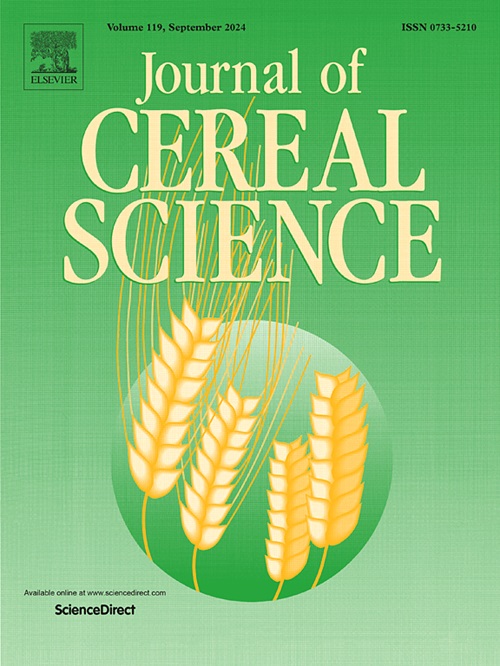Targeting aleurone cells for enhanced protein recovery from wheat bran: Impact on protein functionality and phytate content
IF 3.7
2区 农林科学
Q2 FOOD SCIENCE & TECHNOLOGY
引用次数: 0
Abstract
Protein extraction from wheat bran is challenging due to its multi-layer and fiber-rich structure. Here, opening aleurone cells, via dry and wet milling, their combination and a novel ultrafine milling, and its effect on wheat bran's protein recovery using the alkaline solubilization/isoelectric precipitation and protein structure, functionality, and phytate content were investigated. Wet milling and ultrafine milling improved protein recovery and purity but only ultrafine milling reduced bran particle size to the aleurone cells and exposed their structure. Despite this, ultrafine milling did not significantly increase protein yield compared to wet milling, which partially opened the aleurone cells, meaning that opening the cells per se is not enough for extracting their protein. Proteins extracted with the aid of ultrafine milling had smaller particle sizes with significantly better water solubility (>2-fold) and rheological properties. Both wet milling and ultrafine milling significantly improved the removal of phytate during the wet fractionation process. Altogether, optimizing milling techniques offers a promising path to enhance accessibility to wheat bran proteins and their quality if carefully fine-tuned but other assistant technologies are necessary for boosting the recovery of the released protein from aleurone cells.

以糊粉细胞为目标增强麦麸蛋白质的回收:对蛋白质功能和植酸含量的影响
由于麦麸的多层结构和丰富的纤维结构,从麦麸中提取蛋白质具有挑战性。本文研究了打开糊粉细胞、干法和湿法磨粉、它们的组合和一种新型的超细磨粉,以及它们对碱性增溶/等电沉淀法回收麦麸蛋白质的影响,以及蛋白质的结构、功能和植酸含量。湿磨和超细磨均提高了蛋白质的回收率和纯度,但只有超细磨降低了麸皮对糊粉细胞的粒径并暴露了其结构。尽管如此,与湿法研磨相比,超细研磨并没有显著提高蛋白质产量,湿法研磨部分打开糊粉细胞,这意味着打开细胞本身不足以提取蛋白质。超微粉碎提取的蛋白质粒径更小,水溶性(2倍)和流变性显著提高。湿磨和超细磨均显著提高了湿分馏过程中植酸盐的去除率。总之,优化碾磨技术为提高麦麸蛋白的可及性及其质量提供了一条有希望的途径,如果仔细调整,但其他辅助技术对于促进从糊粉细胞中释放的蛋白质的恢复是必要的。
本文章由计算机程序翻译,如有差异,请以英文原文为准。
求助全文
约1分钟内获得全文
求助全文
来源期刊

Journal of Cereal Science
工程技术-食品科技
CiteScore
7.80
自引率
2.60%
发文量
163
审稿时长
38 days
期刊介绍:
The Journal of Cereal Science was established in 1983 to provide an International forum for the publication of original research papers of high standing covering all aspects of cereal science related to the functional and nutritional quality of cereal grains (true cereals - members of the Poaceae family and starchy pseudocereals - members of the Amaranthaceae, Chenopodiaceae and Polygonaceae families) and their products, in relation to the cereals used. The journal also publishes concise and critical review articles appraising the status and future directions of specific areas of cereal science and short communications that present news of important advances in research. The journal aims at topicality and at providing comprehensive coverage of progress in the field.
 求助内容:
求助内容: 应助结果提醒方式:
应助结果提醒方式:


